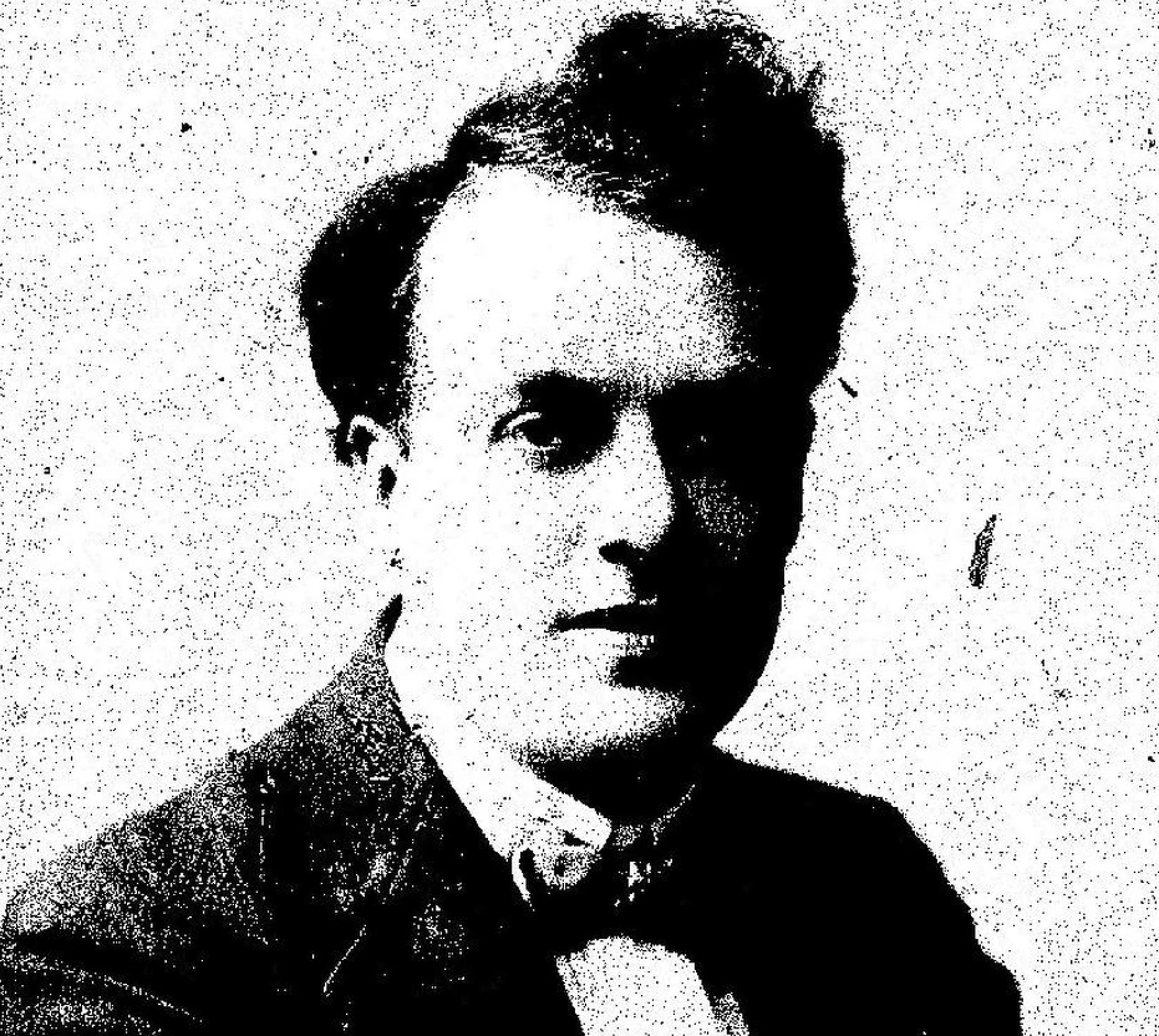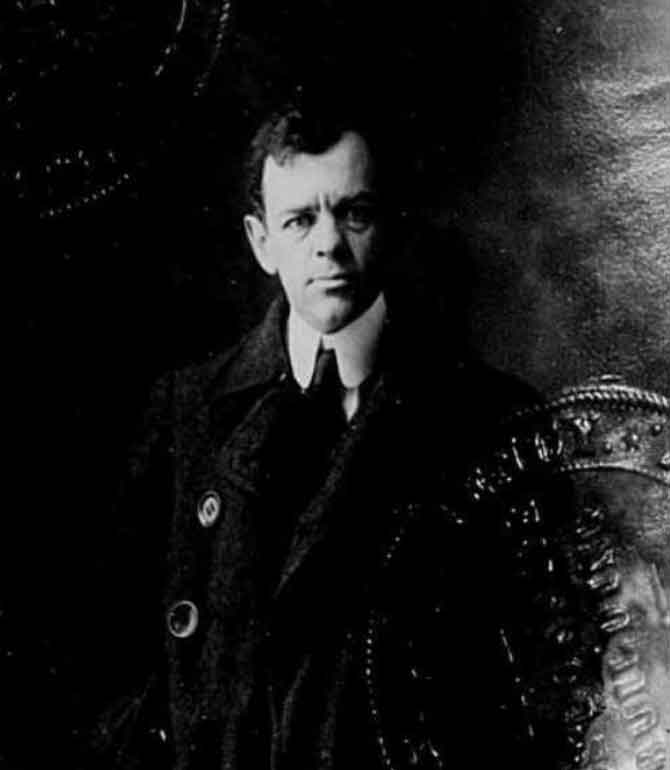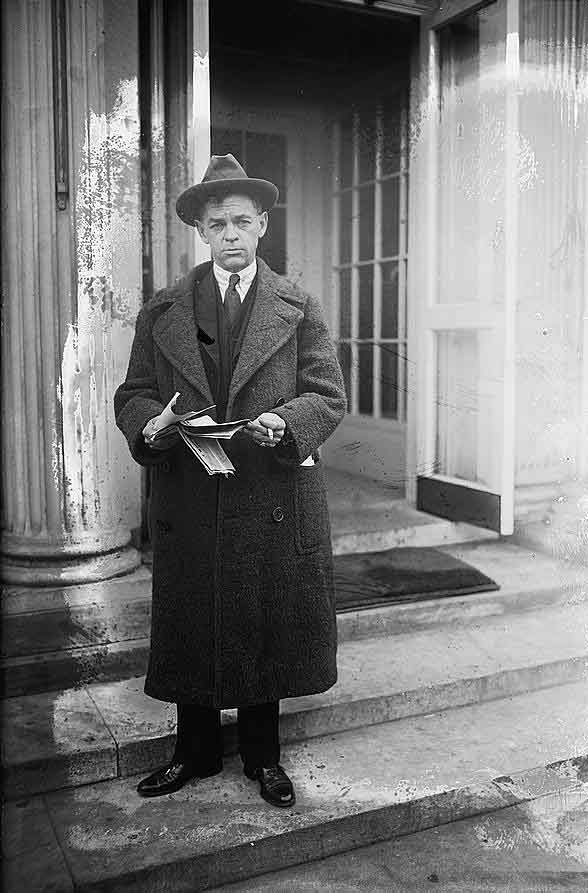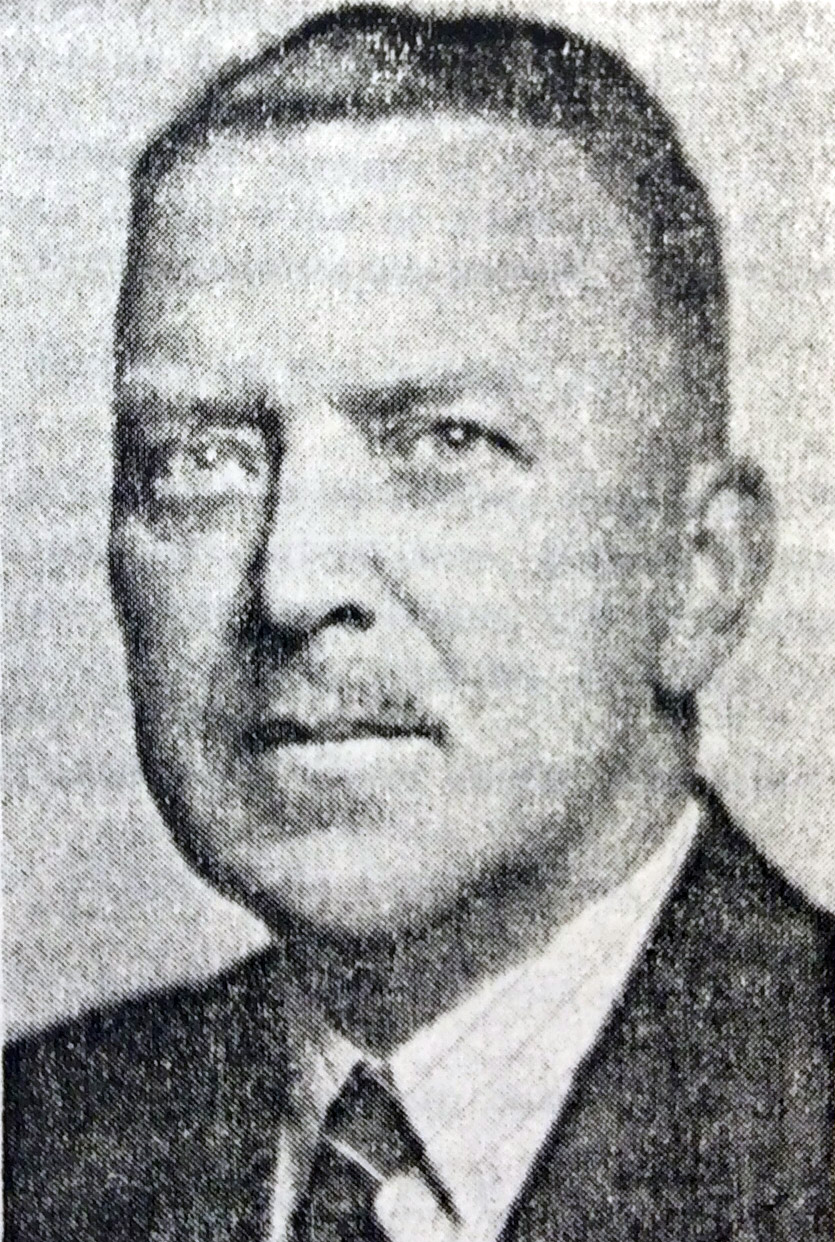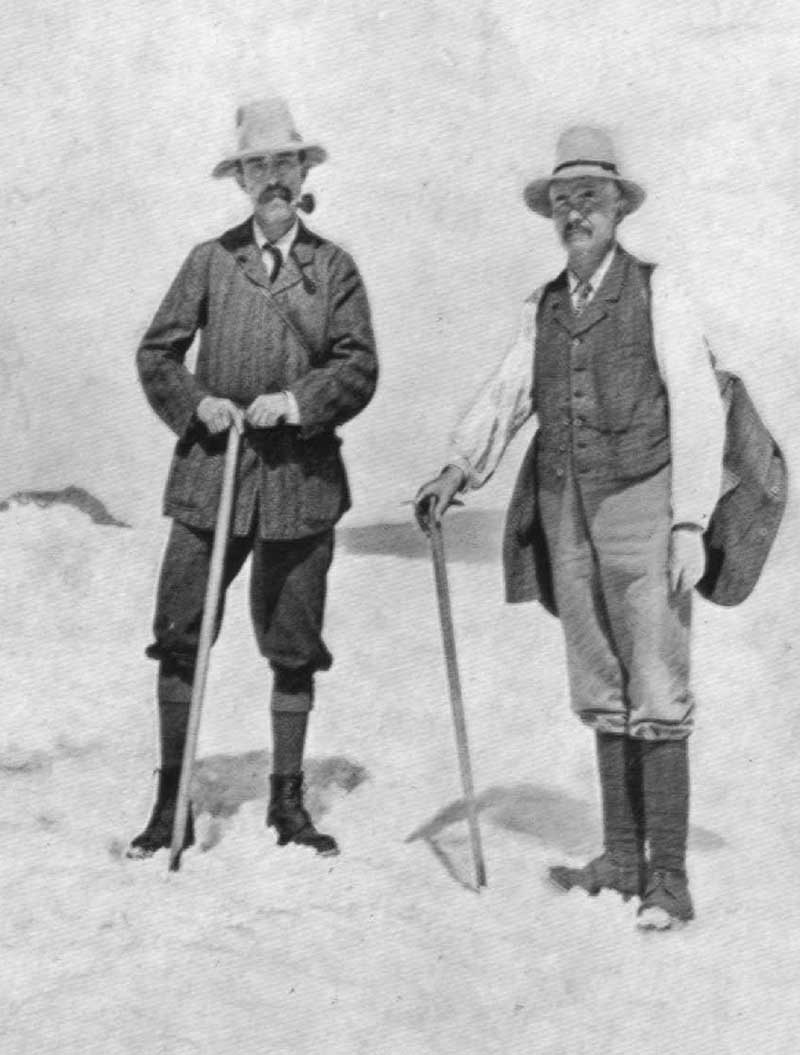James E. McEvoy [1862–1935]
b. 1862 — Carleton County, Ontario
d. 1935 — Corbin, British Columbia
McEvoy, on the staff of the Geological Survey of Canada, made a reconnaissance of the route west of Edmonton through the Yellowhead Pass in 1898, during which he took the first photograph of Mount Robson.
McEvoy’s father was James McEvoy [b. 1818, County Kildare, Ireland – d. 1896, Ottawa, Ontario], a farmer who arrived in Canada before 1833. The elder McEvoy married Margaret McNamara [b. 1820, Tipperary, Ireland—d. 1900] in Ottawa in 1848 (1, 2).
James Jr. was educated in Ottawa public schools and McGill University, graduating in science in 1883. For a short time he taught school and then accepted a position on the staff of the Geological Survey of Canada, where he remained for 15 years (3). As a young man, he became interested in military affairs, was an officer in the Governor General’s Foot Guards, Ottawa, later a Captain in the Kootenay Rifles, having organized two companies in that Regiment. In the Firstg World War, with the rank of Major, he was on the staff of the chief instructor in trench warfare at Niagara, London, and border camps (4).
In 1889 he accompanied George Mercer Dawson [1849–1910], the assistant director of the Survey, on geological investigations in British Columbia(5). In 1898 he made a geological survey of the Yellowhead Pass route from Edmonton to Tête Jaune Cache for the Geological Survey, passing by Mount Robson:
When we first caught sight of it, a shroud of mist partially enveloped the summit, but this presently rolled away, and we saw its upper portion dimmed by a necklace of feathery clouds, beyond which its pointed apex of ice, glittering in the morning sun, shot up far into the blue heaven above. The top of the mountain is usually completely hidden and rarely indeed is it seen entirely free from clouds. The actual height of the peak is 13,700 feet, or 10,750 feet above the valley.… Although Robson Peak has been long known, its height had never been determined, nor was it supposed to be particularly notable in that respect, but now since the height of Mts. Brown, Hooker and Murchison have been proved to be greatly exaggerated, it has the distinction of being the highest known peak in the Canadian Rockies. [p. 16]
His report included a map showing the Yellowhead Pass route from Edmonton to Tête-Jaune Cache (6). Arthur Oliver Wheeler [1860–1945] wrote in 1912 (7):
The splendid report of James McEvoy, published by the Geological Survey of Canada in 1900, dealing with the geology and natural history resources of the country traversed by the Yellowhead Pass route from Edmonton to Tête-Jaune Cache, contains the most comprehensive and reliable geographical information that has yet been published, and also contains the only geographical map published of that route on a sufficiently large scale to be of value.
In 1901 Mr. McEvoy became geologist for the Crow’s Nest Pass Coal Company at Fernie, B.C. He married Florence Ray [1876 – d. 1942] in 1902. In 1906 was appointed chief engineer of the company, but relinquished the position soon afterwards to commence practice in Toronto. He was regarded as one of the best authorities on coal and his services had been retained for numerous enterprises in connection with coal, iron, and oil operations, not only in Canada but in all parts of the world. He was a member of the Canadian Institute of Mining and Metallurgy, the Engineering Institute of Canada, the American Association for the Advancement of Science, and of the Mining and Metallurgy Institute, London, England (8).
EARLY CITIZEN DIES SUDDENLY
James E. McEvoy, geologist and mining engineer, of Ottawa, died at Corbin on Friday inst. from a heart attack. Deceased had been reporting on some phosphate claims about six or seven miles from Corbin.
The death of James McEvoy recalls the early days of Fernie when he was one of our leading citizens and an official of the Crow’s Nest Pass Coal Co. He was a very clever geologist and made a lot of early surveys of the Crow’s Nest Pass coal fields. Had the C.P.R. paid attention to his reports on the Hosmer coal property they would have been a million or so to the good, his report was that the coal seams at that point could not be mined profitably.
During the time he spent in Fernie he took an active interest in local affairs. He was Instrumental in the forming of two companies of the Kootenay Rifles and was appointed captain of A company.
He severed his connection with the C.N.P. Coal Co. about 1907 and took up his residence in Toronto and later on moved to Ottawa.— Fernie Free Press, July 26, 1935 (9)
He was survived by his widow and one daughter, Dorothy Ray McEvoy. McEvoy was buried in Beechwood Cemetery, Ottawa.
- 1898 McEvoy Yellowhead Pass Route
- — Report on the geology and natural resources of the country traversed by the Yellowhead Pass route from Edmonton to Tête Jaune Cache comprising portions of Alberta and British Columbia. Ottawa: Geological Survey of Canada, 1900. Natural Resources Canada
- — “Map Showing Yellowhead Pass Route From Edmonton To Tête-Jaune Cache.” (1900). Natural Resources Canada
- 1. Rooney, Joan McEvoy. The History of the Family of James and Margaret McEvoy of Bowesville. 2020 davidalexanderthomas. davidalexanderthomas
- 2. James McEvoy (1818 – 1896). 2024. WikiTree
- 3. Whittaker, John A., editor. Early Land Surveyors of British Columbia (P.L.S. Group). Victoria, B.C.: The Corporation of Land Surveyors of the Province of British Columbia, 1990
- 4. “James McEvoy (obituary).” Ottawa Journal, 22 July (1935)
- 5. Dawson, George Mercer [1849–1901]. “Notes on the Shuswap people of British Columbia.” Transactions of the Royal Society Canada, Section 2 (1891). University of British Columbia
- 6. McEvoy, James E. [1862–1935]. Report on the geology and natural resources of the country traversed by the Yellowhead Pass route from Edmonton to Tête Jaune Cache comprising portions of Alberta and British Columbia. Ottawa: Geological Survey of Canada, 1900. Natural Resources Canada
- 7. Wheeler, Arthur Oliver [1860–1945]. “The Alpine Club of Canada’s expedition to Jasper Park, Yellowhead Pass and Mount Robson region, 1911.” Canadian Alpine Journal, Vol. 4 (1912):9-80
- 8. Whittaker, John A., editor. Early Land Surveyors of British Columbia (P.L.S. Group). Victoria, B.C.: The Corporation of Land Surveyors of the Province of British Columbia, 1990
- 9. Fernie Free Press. 1935, July 26, 1935. British Columbia Regional Digitized History
